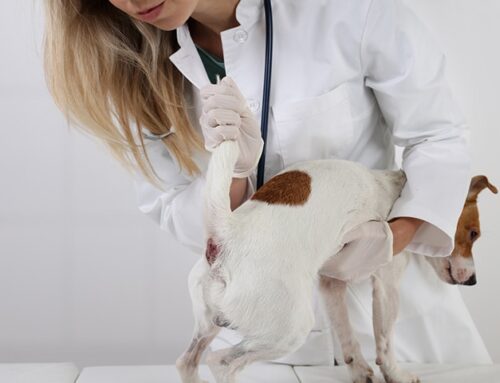When to Spay or Neuter Your Cat: Timing, Age, and What Vets Recommend
Top 3 Takeaways – When to Spay or Neuter Your Cat
Introduction
As veterinarians, one of the most common questions we get at Bliss Animal Hospital is:
“When should I spay or neuter my cat?”
There’s a lot of confusion out there. Some say to wait until 6 months. Others suggest waiting until after a cat’s first heat. And still others are concerned about stunting growth or increasing risk of weight gain.
This blog cuts through the noise. Whether you’re raising a kitten or adopting an older cat, we’ll walk you through the veterinary science behind when and why to spay or neuter—so you can make the best decision for your cat’s health and behavior.
Understanding Sexual Maturity in Cats
Cats reach sexual maturity quickly—often sooner than pet owners expect. In some cases, a female kitten can go into her first heat as early as 4 months old.
What Happens During Puberty?
Preventing these behaviors through timely spay or neuter surgery reduces stress for both your cat and your household—and lowers the risk of unplanned litters.
Recommended Spay/Neuter Timing by Age
| Age Range | What to Consider | Vet Recommendation |
|---|---|---|
| 8–12 weeks | Often used in shelters or rescue settings | Safe with proper protocols but not typically done in private practice |
| 4–6 months | Ideal timing for most kittens | Recommended for indoor cats before puberty begins |
| 6–9 months | Still safe; some behaviors (spraying, heat) may have begun | Common for cats adopted later or larger breeds |
| Over 1 year | May require extra bloodwork or recovery time | Still recommended unless medical conditions apply |
The most common age range at Bliss Animal Hospital is 4–6 months. At this stage, kittens are healthy, resilient, and unlikely to have reached sexual maturity.
Why Early Spay/Neuter Is Often Better
Health Benefits
Behavioral Benefits
Population Control
Spaying and neutering at the right time prevents unplanned litters. A single unspayed female and her offspring can produce over 400,000 cats in just 7 years, according to animal control data.
Common Myths About Spay/Neuter Timing
“Should I let my cat go through one heat first?”
No. This is a common myth. In fact, allowing your female cat to go through heat increases her lifetime risk of mammary cancer. There is no medical or behavioral benefit to waiting for a heat cycle.
“Will spaying/neutering too early stunt growth?”
No. Multiple studies show no long-term impact on bone development, growth, or health in cats spayed or neutered at 4–6 months. Your cat’s growth is more influenced by genetics, nutrition, and overall health than hormones.
“Will my cat get fat after surgery?”
Not necessarily. Spayed and neutered cats may have a slightly slower metabolism, but weight gain is preventable through portion control and play. We’ll help you choose the right food and feeding schedule for your cat’s lifestyle.
Factors That May Affect Timing
While the 4–6 month range is ideal for most cats, a few individual factors might prompt a vet to recommend earlier or later surgery:
Rescue or Shelter Kittens
Spay/neuter may be done as early as 8 weeks and 2 pounds in shelters to ensure cats are fixed before adoption. This is safe with trained teams and proper monitoring.
Outdoor or Feral Cats
In TNR (trap-neuter-return) programs, early sterilization is often performed to prevent breeding. For owned outdoor cats, spaying before the first heat is still best, even if they’re more active.
Large-Breed or Late-Blooming Cats
Breeds like Maine Coons or Norwegian Forest Cats mature more slowly. Vets may suggest waiting until 6–9 months to allow for more muscle and bone development. However, this must be weighed against the risk of unwanted behavior.
Health Concerns
If your cat has a heart murmur, liver enzymes elevation, or another medical condition, your vet may delay surgery for safety. In these cases, we may run pre-op bloodwork and reassess in 1–2 months.
What If My Cat Is Already Over 1 Year?
It’s never “too late” to spay or neuter. Adult cats can still benefit from surgery—even if they’ve already been in heat, sprayed, or had litters.
Reasons to still spay or neuter an older cat:
Recovery in adult cats may be slightly longer, and pain management needs may vary. But the benefits remain strong, especially for overall longevity and quality of life.
What’s the Process Like at Bliss Animal Hospital?
We make the experience smooth and supportive for both you and your pet. Every spay/neuter surgery includes:
We also provide guidance on pre-op fasting, what to expect post-op, and how to prepare your home for a smooth recovery.
Frequently Asked Questions
“Is it safe to spay my cat while she’s in heat?”
It’s possible, but not ideal. The uterus is more vascular during heat, increasing bleeding risk. At Bliss, we generally recommend waiting until the heat cycle ends (5–7 days) unless emergency spay is medically necessary.
“Can my cat go outside before she’s fixed?”
We strongly advise keeping unaltered cats indoors. Outdoor exposure before spay/neuter increases risk of fights, escape, disease, and—most importantly—pregnancy.
“What if I just adopted an adult cat that was never fixed?”
Schedule a wellness visit so we can assess their health and recommend a plan. Spaying or neutering at any age can reduce long-term medical risks and prevent ongoing behavior challenges.
Conclusion
Timing matters when it comes to spaying or neutering your cat—but so does context. While 4–6 months is ideal for most kittens, some cats may benefit from earlier or later surgery depending on their lifestyle, health, and behavior.
What’s most important is doing it. Spaying and neutering are critical tools in protecting your cat’s health, preventing unwanted litters, and ensuring a peaceful home environment.
At Bliss Animal Hospital, we’re here to guide you every step of the way—from kittenhood to senior years. If you’re unsure when to schedule surgery, our team is happy to help you make an informed, compassionate choice.
Call to Action (CTA)
Schedule online or call us at (949) 354-5201 to book your appointment today.
Cat Spay and Neuter Services in Orange County, CA
Meet Our Team
The blissfull faces behind the care
Driven by compassion and purpose, here is the team who will work to make a difference in your pet’s life. Every single visit.


What your neighbors are saying!
Areas we Serve at Bliss Animal Hospital:
“Better Care. Better medicine.” This is our motto, and our veterinary staff stands behind it.
Bliss Animal Hospital is conveniently located at the Home Depot Plaza in Foothill Ranch, less than a 10-minute drive from the neighborhoods of Lake Forest, Rancho Santa Margarita, Mission Viejo, and Irvine (Great Park and Portola Springs). We also serve more distant regions like Tustin, Coto de Caza, Las Flores, Ladera Ranch, Laguna Hills, Laguna Woods, Stonegate (Irvine), Woodbury (Irvine), and Cypress Village (Irvine).
Our vet hospital is ready to serve not only the communities of South Orange County but also anyone who truly believes that veterinary medicine starts with relationships.









Leave A Comment